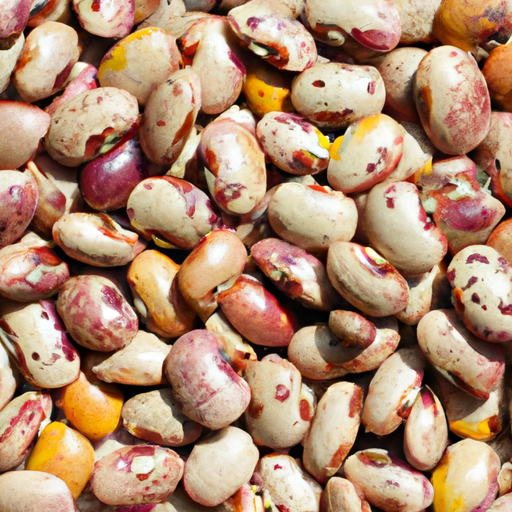The Versatile Great Northern Beans: A Delicious and Nutritious Addition to Your Kitchen
When it comes to versatile and healthy pantry staples, few ingredients can compete with dried Great Northern beans. These small, ivory-colored legumes are not only packed with nutrition, but they also bring a delightful taste and texture to a variety of dishes. In this blog post, we’ll take an in-depth look at dried Great Northern beans, exploring their taste, common uses in cooking, nutritional value, and uncovering some interesting history and facts.
Taste and Texture
Dried Great Northern beans have a mild and delicate flavor profile, making them incredibly versatile. They possess a creamy texture with a thin skin that is prized for its pleasing mouthfeel. When cooked, these beans retain their shape relatively well, making them an ideal choice for soups, stews, and casseroles.
Common Uses in Cooking
One of the greatest attributes of dried Great Northern beans is their ability to absorb the flavors of the ingredients they are cooked with. This quality makes them an excellent foundation for a wide array of dishes where they can take on both savory and sweet flavors. Here are some common uses of Great Northern beans in cooking:
Soups and Stews
Dried Great Northern beans are often used as the star ingredient in nourishing soups and stews. Their creamy texture blends beautifully with aromatic herbs, vegetables, and meats, delivering a wholesome and satisfying dish. Whether it’s a comforting white bean and ham soup or a robust Tuscan bean stew, these beans add heartiness and depth to any recipe.
Salads and Sides
Great Northern beans can also play a supporting role in salads and side dishes. Tossed with vibrant vegetables, a zesty vinaigrette, and fresh herbs, they bring substance and protein to light and refreshing salads. Additionally, simmered until tender with aromatics, they can be transformed into a delightful side dish, seasoned with herbs and a hint of citrus.
Dips and Spreads
When pureed, cooked Great Northern beans become a velvety canvas for creating dips and spreads. From classic hummus variations to creamy bean dips with roasted garlic or sun-dried tomatoes, these legumes provide a nutritious alternative and a creamy texture that rivals traditional spreads.
Nutritional Value
In addition to their culinary versatility, dried Great Northern beans are a nutritional powerhouse. They are an excellent source of plant-based protein, making them a fantastic choice for those following a vegetarian or vegan diet. These beans are also high in fiber, which aids in digestion, helps regulate blood sugar levels, and promotes a healthy colon. Moreover, Great Northern beans are a good source of essential minerals such as iron, magnesium, and folate, supporting overall well-being.
History and Fun Facts
Uncovering the history of dried Great Northern beans is like a journey through time. Originally cultivated in the Andean region of South America, along with other bean varieties, they were renowned for their adaptability to various climates and growing conditions. European explorers introduced these beans to North America during the Columbian Exchange, where they gained popularity due to their hardiness, cooking qualities, and mild flavor.
The name “Great Northern” is said to have originated from the region where the beans first gained prominence in the United States: the Upper Midwest. Farmers in the region found that these white beans thrived in the cooler climates, and they became a staple crop for many households. Today, Great Northern beans are commercially grown across the United States and remain a beloved ingredient worldwide.
Conclusion
In conclusion, dried Great Northern beans are truly a valuable addition to any kitchen. With their mild taste, creamy texture, and ability to complement a variety of dishes, they offer endless culinary possibilities. Moreover, the nutritional benefits they provide contribute to a healthy diet. Whether you’re simmering them in a comforting soup, tossing them in a refreshing salad, or blending them into a luxurious dip, these beans are sure to bring both satisfaction and nourishment to your meals. So, why not stock up on dried Great Northern beans and let your creativity blossom in the kitchen?
Dried Great Northern Beans
Origin: Great Northern beans (Phaseolus vulgaris) are believed to have originated in South America. They were most likely domesticated there over 7,000 years ago and were later introduced to North America by European explorers.
Common Uses: Dried Great Northern beans are versatile legumes used in a variety of dishes worldwide. They are commonly used in stews, soups, and casseroles, as well as in dishes like baked beans, curries, and salads. Due to their mild flavor and creamy texture, they are often used as a substitute for other white beans like cannellini or navy beans.
Nutritional Benefits: Great Northern beans are a nutritious addition to a balanced diet. They are low in fat and cholesterol-free, making them heart-healthy. They are a good source of dietary fiber, providing both soluble and insoluble fiber, which can help with digestion and support healthy blood sugar levels. They are also a rich source of plant-based protein, containing essential amino acids.
Unique Properties: When cooked, Great Northern beans have a creamy texture and a delicate flavor. They have a thin skin, making them ideal for pureeing into soups or incorporating into dishes that require a smoother consistency. Great Northern beans are known for their ability to absorb flavors from other ingredients during cooking, making them a versatile addition to many dishes.
Historical Significance: The cultivation of beans, including Great Northern beans, played a crucial role in ancient civilizations. They served as a significant source of sustenance due to their nutritional value and ability to store well. In many cultures, beans have been a staple food for centuries, providing an important source of protein and other essential nutrients, especially in times when meat was limited or scarce.




Use the share button below if you liked it.
It makes me smile, when I see it.